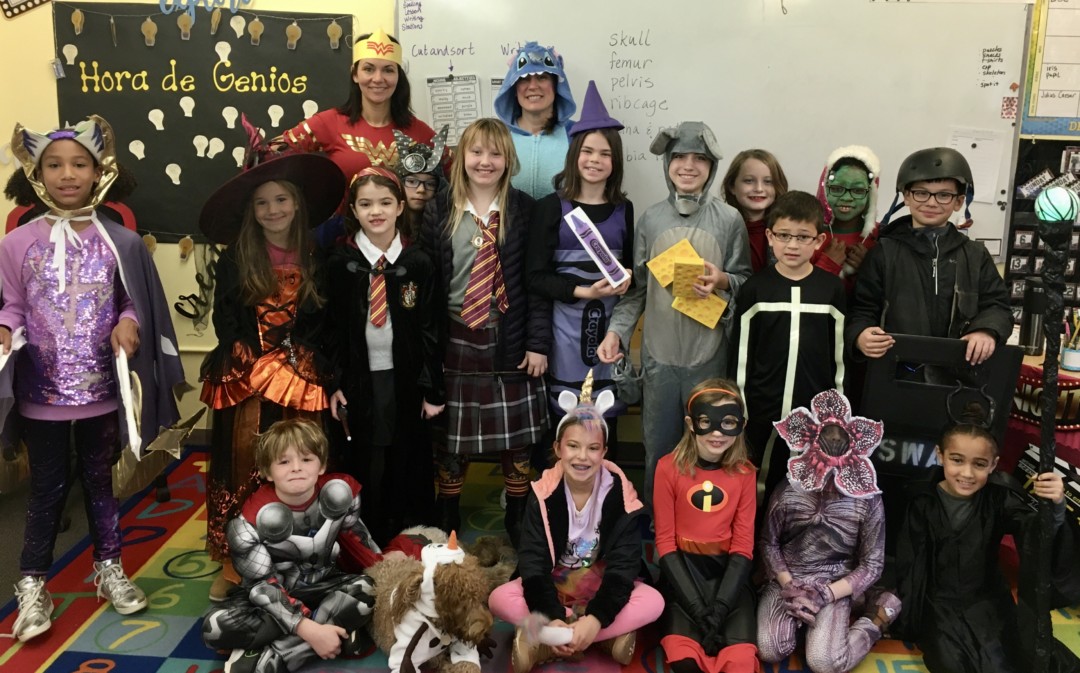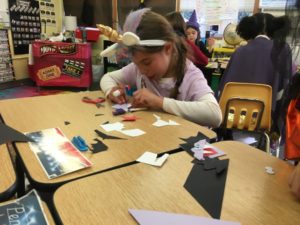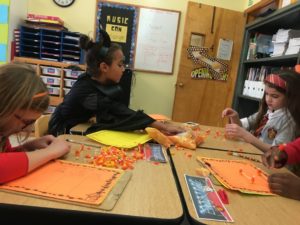La Lectura
We have really been focusing on our reading comprehension strategies and would love for you to help reinforce these at home during your child’s nightly reading. Remember: reading is the number one most important thing for your child! They should be reading aloud every single day in both English and Spanish. We don’t give much other homework in order to make sure you have time for reading.
7 Reading tips for home:
1. Make connections.
When kids connect what they already know to what they read, it helps them focus. Show your child how to make connections when you read aloud. If a book mentions places you’ve been to with your child, talk about those memories. Then have your child give it a try.
2. Ask questions.
Asking questions encourages kids to look for clues in the text. When you read together, ask questions to spark your child’s curiosity. Ask things like “What do you think will happen?” or “How is that character feeling?”
3. Make “mind movies.”
Visualizing helps bring a story to life. That’s where mind movies come in. When you read with your child, describe what the scene looks like in your head. Talk about how it makes you feel. You can use other senses, too. For example, if the scene takes place outside, what does it smell like? Then invite your child to make a mind movie, too. Point out how your child’s movie is different from yours. If your child likes to draw or color, encourage your child to make a picture of the scene, too.
4. Look for clues.
When you combine what you already know with clues from a story, you can make guesses or predictions. These are inferences. And making them is a great way to build reading comprehension.
For example, when we read “Kim’s eyes were red and nose was runny,” we can infer that Kim has a cold or allergies. Help your child do this as you read. If a character is wearing gym clothes and sweating, ask your child what the character might have been doing before.
5. Figure out what’s important.
Ask your child: Who are the main characters? What’s the most important thing that has happened in the story so far? What problem are the characters trying to solve? When kids can point out what’s important, they’re more likely to understand what they read.
Your child can also use a tool called a graphic organizer to do this. A “story element” organizer keeps track of the main characters, where the story is taking place, and the problem and solution of the story.
6. Check understanding.
It helps to encourage kids to stop and ask themselves, “Is this making sense?” If your child gets stuck, suggest rereading the part that didn’t make sense. What about it was confusing? Were there specific words that tripped your child up?
7. Try new things.
The more kids know about the world, the more they can get meaning out of what they read. You don’t have to take an expensive trip or go to a museum to do this, though. You can expand kids’ background knowledge and vocabulary in lots of ways.
Shooting hoops or watching a baseball game can help your child connect more with books about sports. Riding the subway might make your child interested in books that take place in big cities.
SPELLING
We art starting a new, more meaningful, method of spelling. We are refocusing on specific parts of words, to help us in our reading and writing. Your child brought home a new (shorter) list of words on Tuesday. They can put the list in alphabetical order (on the right side of the page) and turn it in on testing day (Friday, November 8th) for a bonus point on their spelling test. Why? Looking at the ABC order will help them dig into the words, comparing their spelling.
We will be doing several activities with the spelling words during the 2-week period, including word sorts. Your child brought home an orange word sort on Friday. They should use these to practice their spelling words. Comparison of words helps us to look at them more carefully.
Las matemáticas
We completed our unit on addition to 10,000 with a test on Monday. Everyone did great! We made time on Tuesday for the students to make any corrections to their test, with most of them realizing they made very simple/silly errors. We need to learn from our mistakes!
We will continue taking the addition 2-minute timed tests but we have also added in the 2-minute subtraction tests. Our new unit is subtraction to 10,000. Skill and drill with flashcards at home is VERY helpful! Students are making the connections between addition and subtraction and we are really looking for automaticity! Mastery of these skills is very important as we will be building upon them in each unit throughout the year.
Science
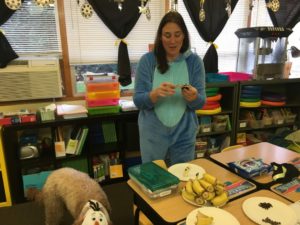 Our objectives this week were to:
Our objectives this week were to:
• Explain that the five senses work with the brain to process information about our surroundings
• Identify the surrounding parts of the eye: eyesockets, eyebrows, eyelids, and eyelashes
• Identify the outer parts of the eye: Sclera, cornea, iris, and pupil
• Identify the inner parts of the eye: lens, retina, and optic nerve
• Explain how the parts of the outer and inner eye work together with the brain to allow a person to see
• Describe nearsightedness and farsightedness and how these can be corrected
• Identify the outer parts of the year: ear flap, ear lobe, ear canal, and eardrum
• Identify the middle parts of the air as the three ear bones: hammer, anvil, and stirrup
• Identify the inner parts of the year: cochlea and auditory nerve
History & Geography
Our goals this week were to:
• Explain why ancient Rome was considered a civilization
• Identify and locate on a map the following areas: France, Spain, England, Germany, North Africa, and Egypt
• Describe the life and contributions of Julius Caesar
• Identify some of the contributions of the ancient Roman civilization, and describe how they have influenced the present
• Describe the role of Cleopatra of Egypt in the ancient Roman civilization
• Explain the significance of the Pax Romana and how it affected the life of Romans
Specialists
Art with Ms. Kelly
Apples Paintings
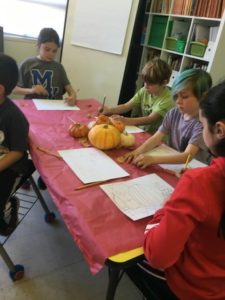 Observe shape, color and texture of real apples
Observe shape, color and texture of real apples- Learn about our state’s apple orchards
- Look at Paul Cezanne’s paintings of fruit
- Draw overlapping apples on a plate (aerial view) or in a bowl (side view)
- Use only red, blue, yellow and white to mix a variety of colors
- Each class from K through 4th/5th made stunning apple paintings!
Leaf Art
- Observe shape, color and texture of autumn leaves
- Make texture rubbings of leaves
- Use leaves for stencils and stamping
- Make rubbings of Ginkgo leaves
Owl Guided drawing
- Use shapes and pattern to draw an owl
- Learn about warm and cool colors, and how to mix brown
- Use watercolor techniques
- Listen to Owl Moon by Jane Yolen
- These beautiful owls are on the bulletin board at school!
Pumpkin Drawings and Still Life
- Observe real pumpkins and fruits
- Learn how to use chalk pastels
- Create a fall still life picture using crayon and tissue paper
We’ll continue these colorful still life projects in November.
Music with Ms. Nadia
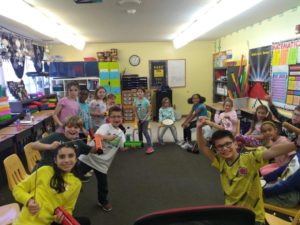 Wow, has it been two months already?! This month flew by as we learned about Solfege, dynamics, and Aaron Copland.
Wow, has it been two months already?! This month flew by as we learned about Solfege, dynamics, and Aaron Copland.
Solfege, a fancy word for the musical system of “do ra mi”, is a useful tool to learn melody. As a group, we played melodies with pitched percussion instruments (boom-wackers and the glockenspiel), while keeping the beat with our non-pitched percussion instruments (clave, shakers, triangle, etc.). Other games and hands-on activities made learning fun, such as Solfege Charades, Solfege Finders, the Solfege Songwriting Challenge, and Do a Deer (hand-motion style).
Aaron Copland was composer in the early 20thcentury who composed such masterpieces as Appalachian Spring and Rodeo, both of which were written as ballets. In a game of Two Truths and a Lie, we learned that Aaron Copland started composing at age 11, studied in Paris for a few years, and had an amazing teacher named Nadia (Nadia Boulanger)! We drew art to his music, learned the words to Simple Gifts (from the seventh movement of Appalachian Spring), changed the words to Simple Gifts in a game of mad-libs, passed a bear around hot-potato-style to Rodeo, and let our imaginations run wild! His compositions feature a wide range of dynamics from his piano legato (soft and smooth) introduction in the first movement of Appalachian Spring to the forte staccato (loud and choppy) second movement. I encourage everyone to listen to Appalachian Spring at home; it’s a wonderful way to start the morning or wind down a long day!
Character Education
Teamwork and collaboration proved to be the most helpful in our Class-wide blanket fort.

